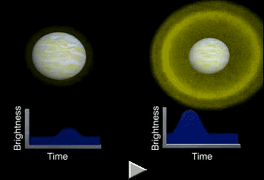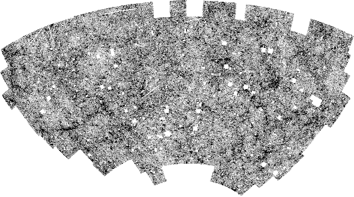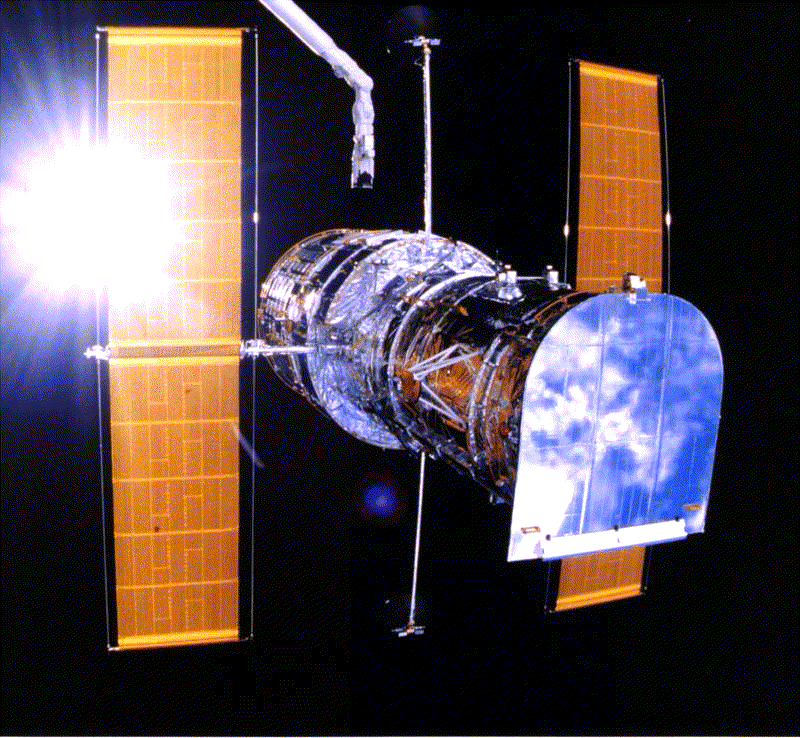A history of ideas

M100, one of the spiral nebulae, in the nearby Virgo cluster of galaxies (AAO photo)
Early 20th century: - the flattened 'island' or Kapetyn Universe
At the beginning of the twentieth century, it was generally accepted that our galaxy was disk-shaped and isolated. But what were the spiral nebulae like M31 (Andromeda) - were they inside or outside the Milky Way? Immanuel Kant had already speculated in the 1750s that these nebulae were, in fact, other 'island' universes.
1912: Slipher - redshifts of spiral nebulae
Vesto Slipher measured spectra from the nebulae, showing that many were Doppler-shifted, that is, the frequency of light was affected by speed of the source (just as the frequency of sound alters for a passing train). By 1924, 41 nebulae were measured, and 36 of these were found to be receding.
1918: Shapley - distance measure using variable stars
A key advance in cosmology came with the development of means to measure the distance to these nebulae. Shapley used Cepheids, bright stars which pulsate at regular intervals between a few days and a month. The period of their variability is correlated with their absolute luminosity, which he calibrated in the nearby Large Magellenic Cloud, an irregular galaxy that is a satellite to the Milky Way.


Figure 1. (left) Animation of a diagrammatic Cepheid brightness variations with time (HST)
Figure 2. (right) Brightness variation of a Cepheid in M100 (HST photo). Click to view an HST animation of a Cepheid found in M100
1923 - 29: Hubble - proportionality between velocity and distance
Hubble was able to resolve Cepheids in M31 (the Andromeda galaxy) with the 100" telescope at Mt Wilson, near Pasadena, California. He developed a new distance measure using the brightest star for more distant galaxies. He correlated these measurements with Slipher's nebulae to discover a proportionality between velocity v and distance d, that is, Hubble’s law v=Hd. The constant of proportionality H is called Hubble's constant (it was significantly over-estimated by Hubble himself).
1964: Penzias & Wilson - the cosmic microwave background radiation
Working with a horn antenna (7.35cm) at Bell Labs, Penzias & Wilson fortuitously discovered an isotropic, that is, uniform in direction, radio background, a relic left-over from the primordial fireball. This cosmic microwave background radiation is key evidence for the Hot Big Bang model. The temperature of this blackbody radiation is today measured to be T = 2.73K (that is, a rather cold -270C).
1986: de Lapparent, Geller & Huchra - large-scale structure, superclusters and voids
Deep redshift galaxy surveys demonstrated the existence of huge bubbles, filaments and sheets on scales from 25Mpc (1Mpc = 3.26 million light-years) to over 100Mpc. Subsequent galaxy surveys are providing detailed information about the distribution of large-scale structure. Radio galaxy and quasar surveys indicate homogeneity (or uniformity) is approached on scales of several hundred Mpc (that is, nearly a billion light years).

The APM survey of thousands of galaxies showing their large-scale angular distribution on the sky
Deep redshift galaxy surveys have discovered that groups of galaxies form large scale structures. These include huge bubbles, filaments and sheets that can span from 25Mpc to over 100Mpc (that’s over 3.08 × 1024 metres!). More recent galaxy surveys are have provided more detail about the distribution of these large scale structures, including the distribution of voids, areas with very or no galaxies at all that can span over 150 Mpc.
1992: COBE satellite - discovery of fluctuations in the cosmic microwave background
In April 1992, the COBE satellite team announced the discovery of anisotropies (or directional differences) in the cosmic microwave background radiation at the level of one part in 100,000. These are thought to be a snapshot at t=400,000 years of the primordial fluctuations that led to galaxy formation. This map of the sky is also the best evidence for the isotropy (or spherical symmetry) of the Universe.

Hubble
1995 - 96: Hubble Space Telescope - improved determination of Hubble parameter
The Hubble Space Telescope (HST) was able to resolve Cepheid variable stars in galaxies in the Virgo cluster, a cluster of galaxies near the constellation Virgo, ensuring a much better calibration of distance measures. This has allowed more accurate estimates to be made of Hubble's constant H. Early galaxies and quasars have also been observed by the HST raising serious doubts about current structure formation models.
Now we know a little bit about the history of our understanding of the Universe, let us show how we now divide up the phases of Universe for study.
